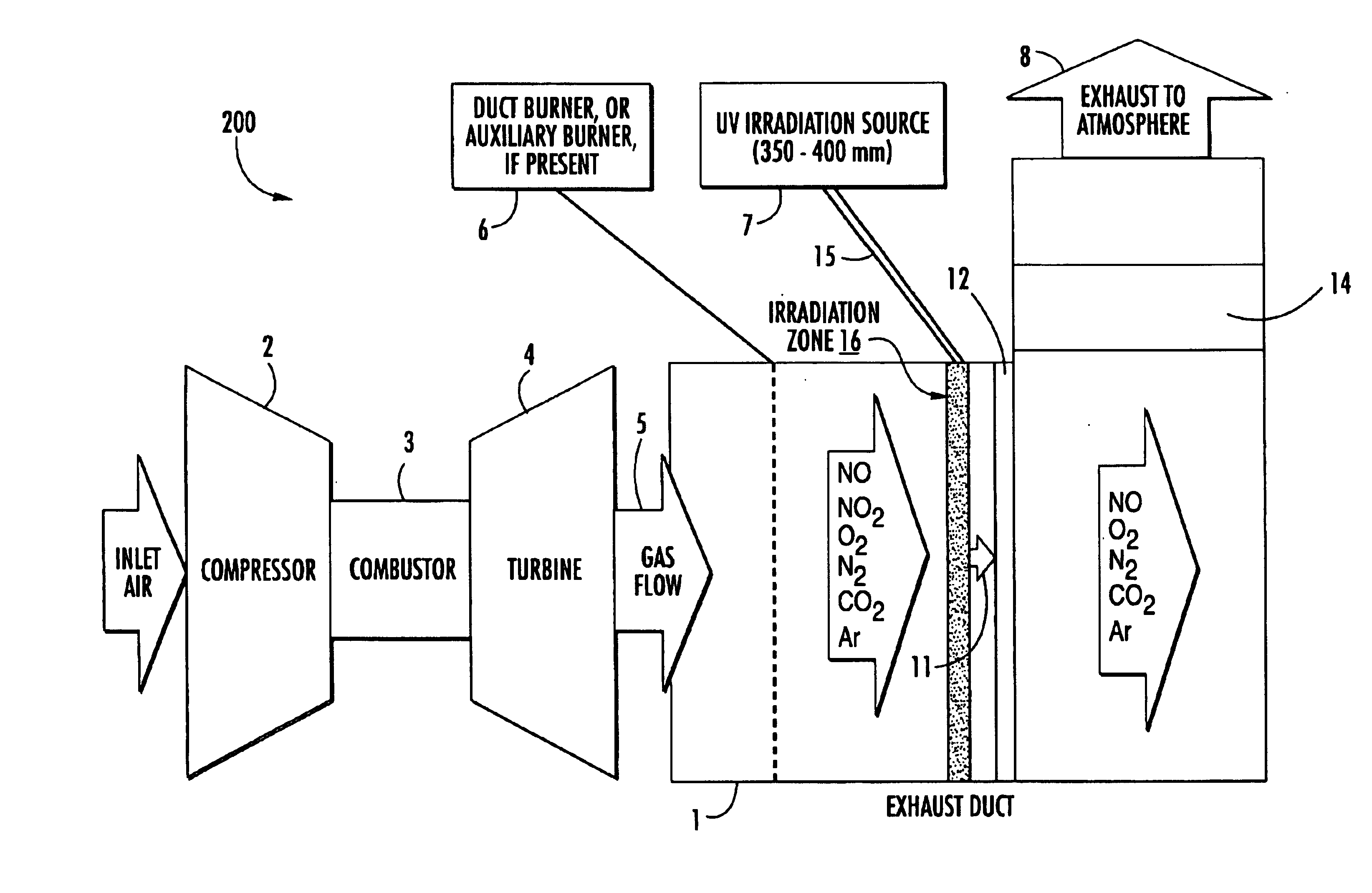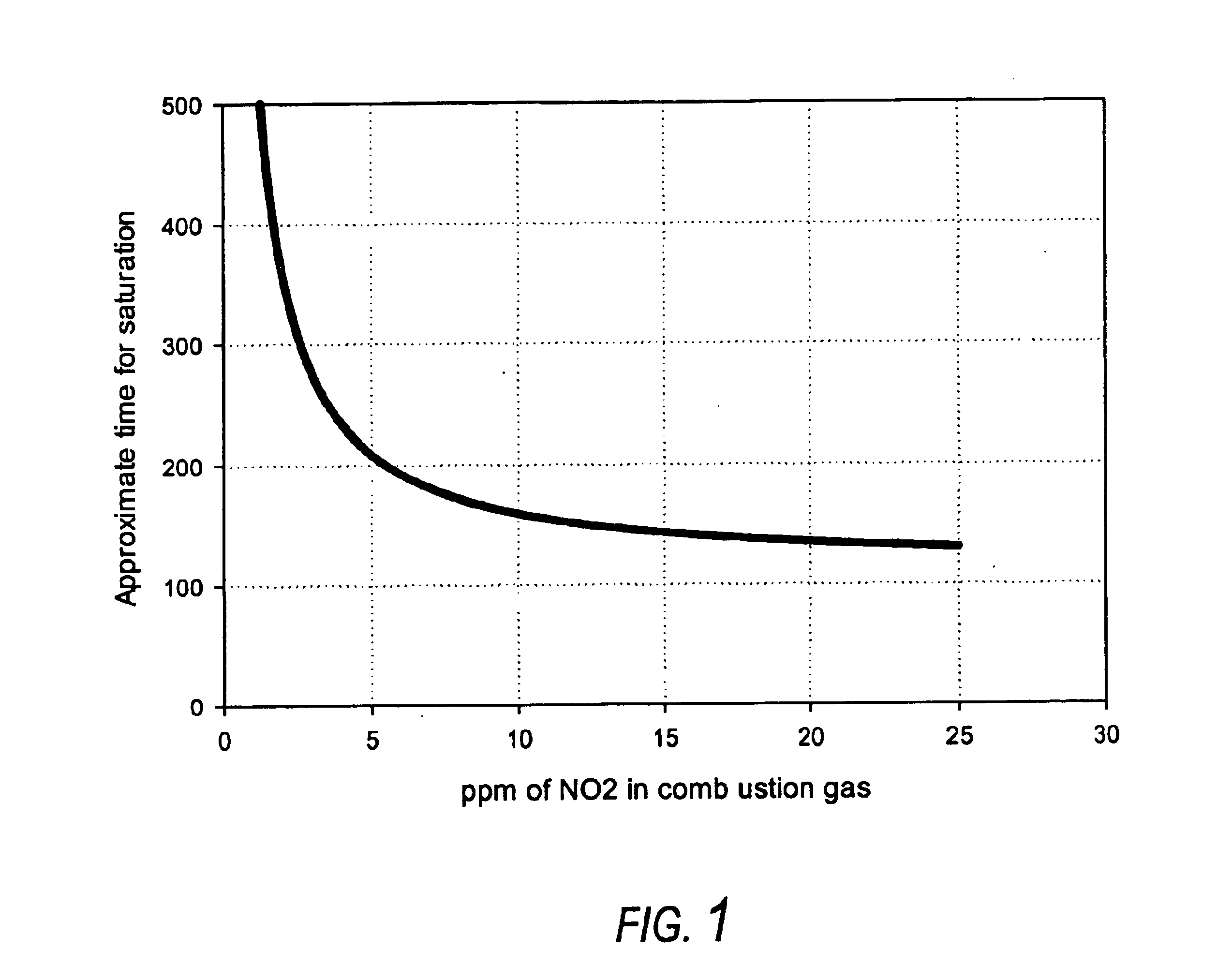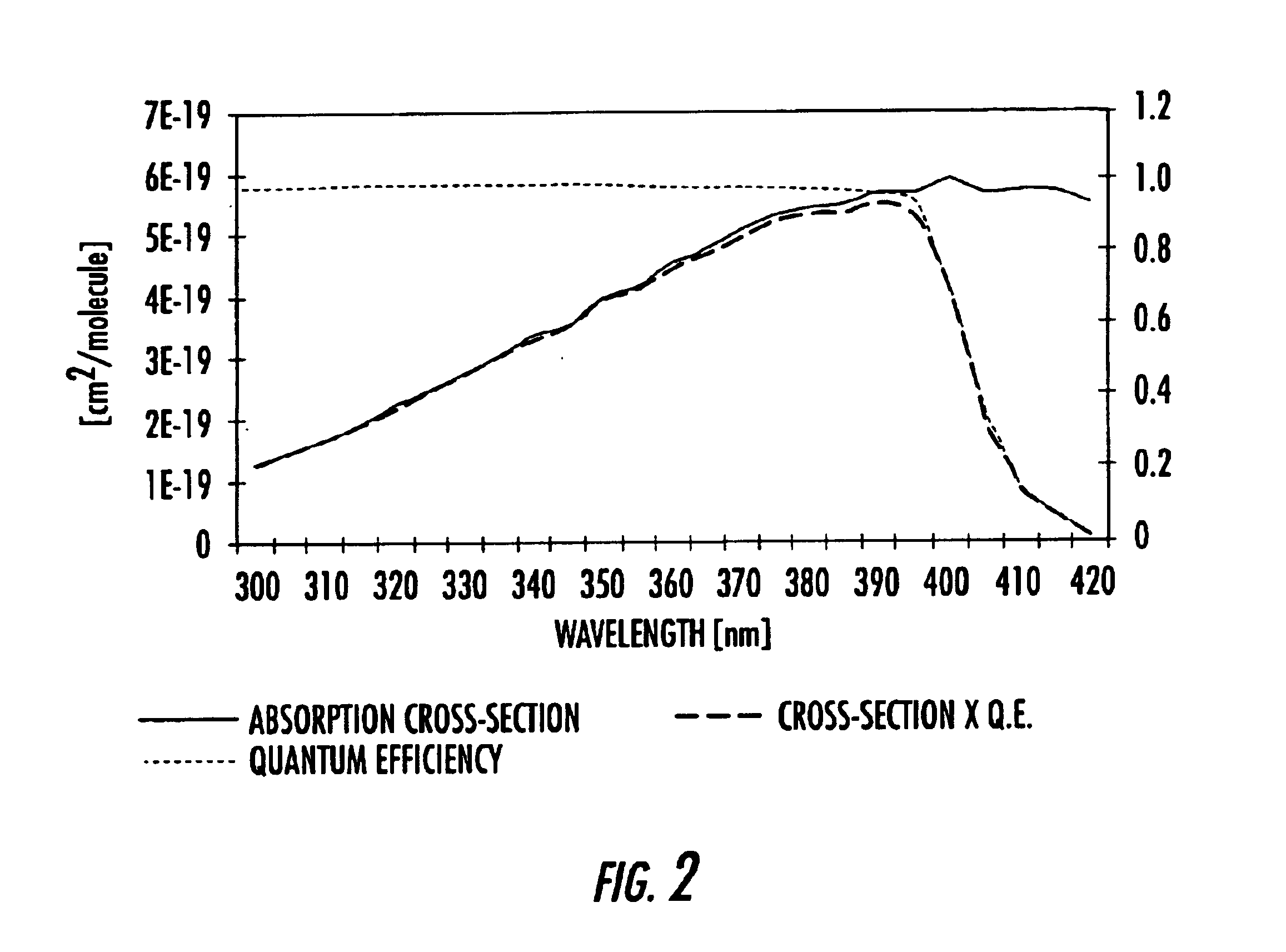Photolytic method of improving mercury capture in fossil (coal) fired systems
a technology of fossil fuels and photolysis methods, which is applied in the direction of emission prevention, combustion process, lighting and heating apparatus, etc., can solve the problems of inability to capture mercury, inhibit the process, and release of mercury into the atmosphere, so as to improve the capture efficiency of mercury, improve the effect of mercury capture and reduction of mercury concentration
- Summary
- Abstract
- Description
- Claims
- Application Information
AI Technical Summary
Benefits of technology
Problems solved by technology
Method used
Image
Examples
Embodiment Construction
[0016]It has been found that the capture efficiency of high surface area sorbents, such as activated carbon, for metals including mercury, is significantly degraded by exposure to NO2. Because of its toxic nature, regulatory agencies are concerned about the release of mercury into the environment. Upon suitable irradiation, NO2 is readily dissociated into NO and O2. Through reduction in the NO2 concentration in the exhaust stream, the chemical capacity of the sorbent to scavenge mercury is improved, thus reducing the mercury concentration is the exhaust gas stream released into the atmosphere.
[0017]In a pulverized coal-based combustion systems, NOx emissions can be very high, such as 500 ppm, with as much as 10-15% of this NOx being NO2. In any new installation, and for many older units, an SCR (Selective catalytic reduction) system is often installed to reduce NOx emissions. An SCR utilizes ammonia vapor as the reducing agent and is injected into the flue gas stream, passing over a...
PUM
 Login to View More
Login to View More Abstract
Description
Claims
Application Information
 Login to View More
Login to View More - R&D
- Intellectual Property
- Life Sciences
- Materials
- Tech Scout
- Unparalleled Data Quality
- Higher Quality Content
- 60% Fewer Hallucinations
Browse by: Latest US Patents, China's latest patents, Technical Efficacy Thesaurus, Application Domain, Technology Topic, Popular Technical Reports.
© 2025 PatSnap. All rights reserved.Legal|Privacy policy|Modern Slavery Act Transparency Statement|Sitemap|About US| Contact US: help@patsnap.com



